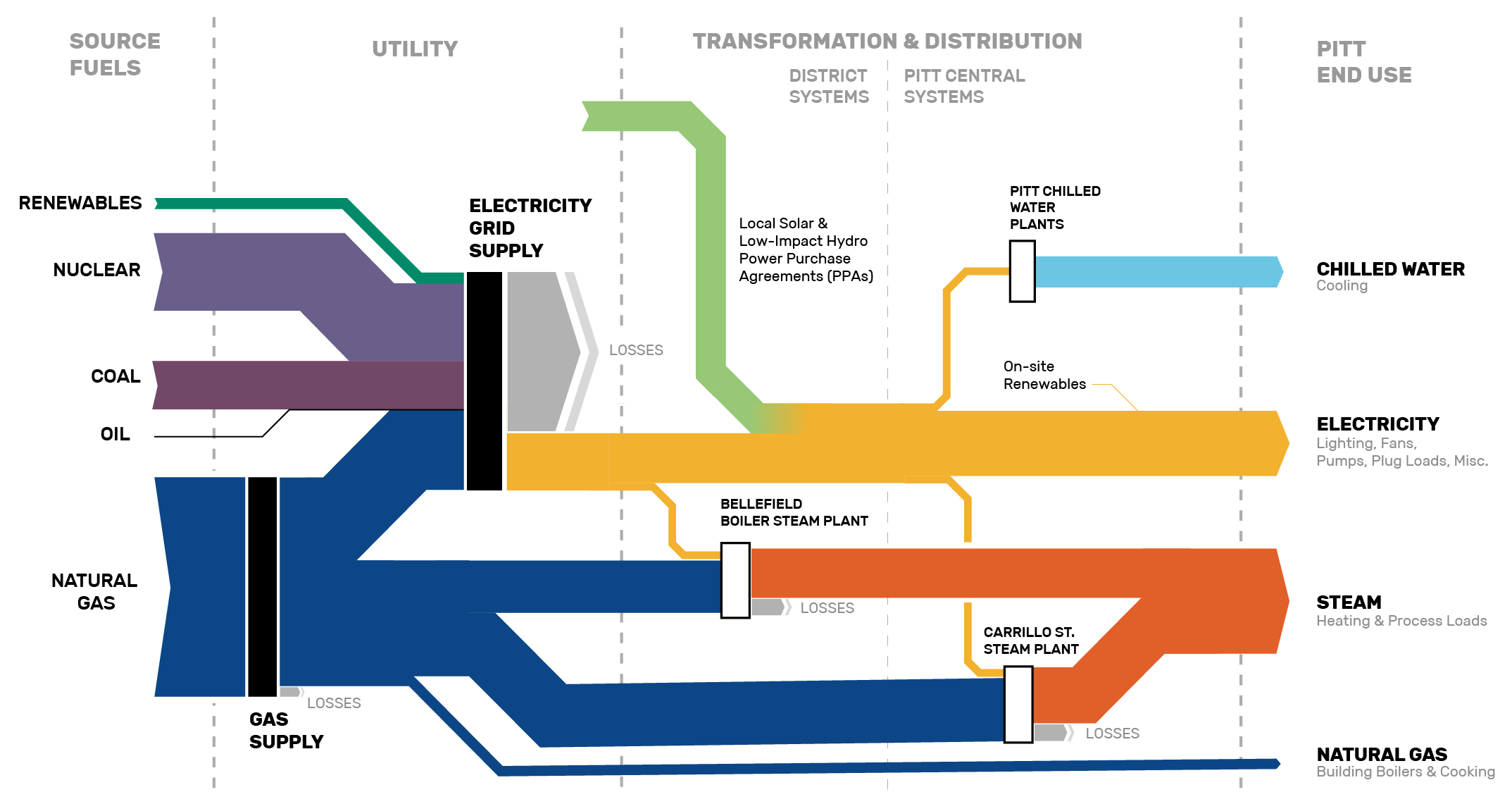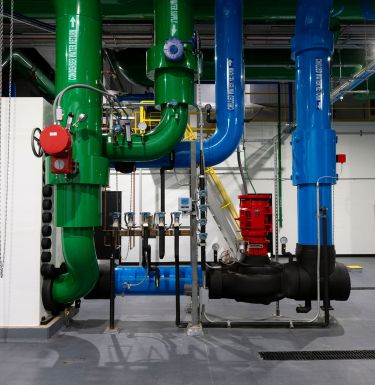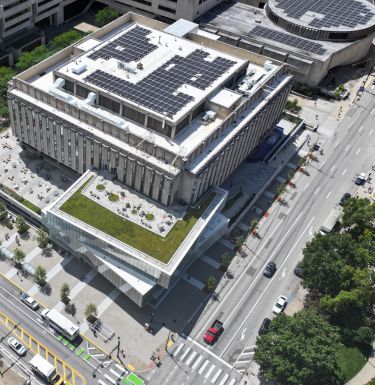
Steam
In FY20, steam was 49% of campus-wide energy use. Steam is an effective thermal heating mechanism generated both on- and near-campus at the Pitt-owned Carrillo Street Steam Plant and the cooperatively owned Bellefield Boiler Plant.
Generating and using steam locally has many benefits, including energy resilience, reduced equipment needs at the building scale, and reduced losses from distribution. While universities and municipalities across the United States have chosen district steam for these reasons, most generate their steam from fossil fuels – and Pitt is no different. Because Pitt’s campus steam is created by natural gas, it represents a potential opportunity for reducing carbon emissions leading up to 2037.
Learn more about Pitt’s steam usage and future strategies in the Pitt Climate Action Plan.
Using alternative energy sources for steam generation is a significant challenge and the cooperative ownership of our steam plants means that Pitt cannot act unilaterally. As a result, Pitt is partnered with the City of Pittsburgh, Green Building Alliance, and the other institutional owners of our district steam systems to develop an Oakland Energy Master Plan that fully considers the full opportunity for these systems to support continued GHG emissions reduction, improve environmental quality, and increase resiliency.
Carillo Street Steam Plant
Co-owned by the University of Pittsburgh and UPMC, the Carrillo Street Steam Plant came online in 2009 and is powered by natural gas. The steam it produces is used for used for heat, hot water, sterilization, and humidity control. The Carrillo Street Steam Plant is a significant part of the University’s commitment to reducing its carbon footprint.
When it was constructed, the facility was (and remains) one of the cleanest university heating plants in the United States, emitting relatively little exhaust or wastewater for a facility its size. It was originally expected to reduce annual carbon dioxide emissions by ~48,000 metric tons (nearly half of Pitt’s baseline steam-related CO2 emissions).
Today, both the Carrillo and Bellefield steam plants serve Pitt, UPMC, and other Oakland buildings tied into a cooperative commercial district steam network.
Read more about Carrillo Steam Plant in this 2011 Pitt Chronicle article.
Bellefield Boiler Plant
Scope 2 greenhouse gas (GHG) emissions (indirect) tend to be the largest category for universities, (including Pitt). Alongside purchased electricity, Pitt’s Scope 2 GHG emissions include thermal steam energy from the Bellefield Boiler Plant.
Bellefield Boiler Plant is a cooperatively owned thermal steam generation plant originally built in 1907 to serve the Carnegie Library and Museums. Nestled on Boundary Street between the Carnegie Library Main Branch and Carnegie Mellon Univesrity (below Schenley Drive bridge), today Bellefield provides steam heat for the Carnegie Mellon University, the Carnegie Library and Museums, Phipps Conservatory, the University of Pittsburgh, and UPMC’s hospitals in the Oakland neighborhood of Pittsburgh.
In 2009, Bellefield fully transitioned from coal to natural gas, significantly reducing Pitt’s GHG emissions from steam from this facility.



